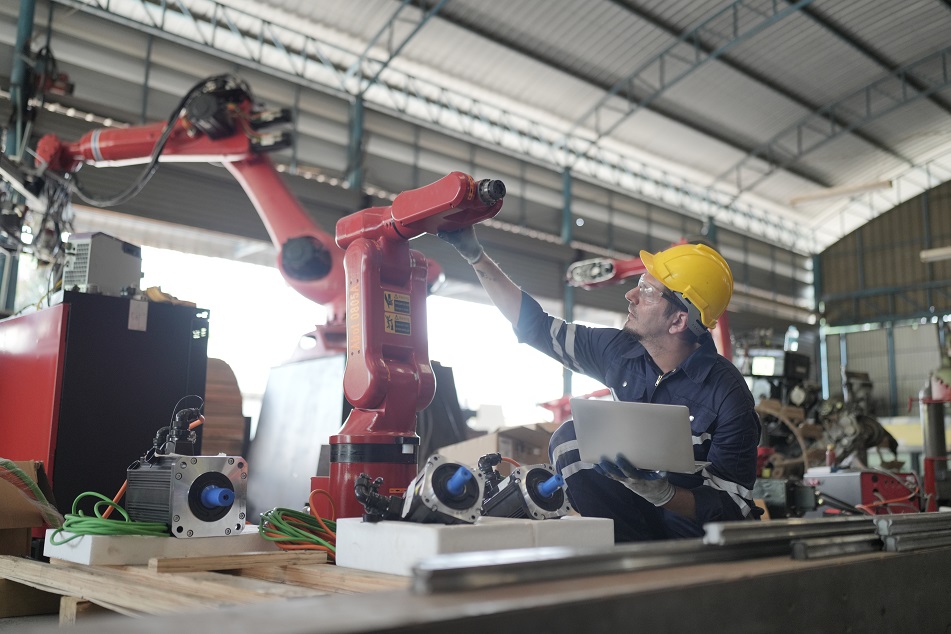Thinking about WITNESS?

The WITNESS dynamic simulation tool from Lanner Group Ltd. is used by call centres, offices, manufacturing companies, logistics companies, and warehouses. According to the Company Representative of DYNAMIC FUTURE, it is the most effective means of the digital transformation strategy. “The only thing you need to be clear about before purchasing WITNESS is what question you are looking for an answer to,” says Jan Šlajer. Here is some basic information about working with WITNESS that you may find useful.
4 ways to start using WITNESS
As an extremely versatile tool, WITNESS offers the possibility to model work environments of various levels of complexity. It is therefore important to make a good decision at the beginning, in which way, and for which processes you need simulations. As well as who will use WITNESS, and how often.
● You want to build simulation models all by yourself
If your company employs someone who has experience with digital twins, and who can develop models and test processes in their software, you can purchase a WITNESS Horizon license. Lanner Group Ltd. will also provide video tutorials, training materials, and case studies. DYNAMIC FUTURE will provide you with one-time WITNESS Basic training, as well as the WITNESS Advance or WITNESS Expert extension.
“We provide WITNESS Basic training as standard to everyone who purchases WITNESS. However, this does not mean that after completing it you will be able to create simulation experiments to the extent that your company requires. This competence comes with practice, which you can’t get by anything other than testing and trying things out,” points out J. Šlajer.
● You want to simulate independently, but need support
If you have purchased a WITNESS Horizon license and need to start working on a specific optimization project, you can agree on longer-term mentoring with DYNAMIC FUTURE. This means that you will receive professional guidance from experienced consultants, whose aim is not to create a project, but to give you experience, offer options, and show the functionality of the software.
“During mentoring, we want the client to think independently about the simulation experiment, gain valuable experience, and be able to apply it when creating other models. It’s all about learning, following dead ends, and discovering new solutions,” says the Company Representative, adding that the role of DYNAMIC FUTURE consists in supporting and passing on know-how.
● You want to work with the simulation model on a user basis
There is also the option of having a simulation model created by DYNAMIC FUTURE specialists, and purchasing a WITNESS Viewer license. This allows you to work with predictive simulation technology in the user interface, for example, in the Model Manager in Excel, the web interface, etc.
“When working in the user interface, WITNESS runs in the background, so customers can work with the simulation model without having to programme anything,” adds Jan Šlajer.
● You want to create complex models and develop them yourself
The most complex options are provided by this combination: the company purchases the full version of WITNESS, enabling its own development; DYNAMIC FUTURE creates a model according to a specific assignment, trains a responsible employee, and mentors further steps as needed. The employee of the company can then work with the model, and will gradually learn to edit the model himself/herself.
“When we deliver a simulation model to a customer, and he/she also purchases complete WITNESS and orders our mentoring, he/she can very well learn to create his/her own models within a few months, and gradually integrate decision support technologies into all his/her processes,” explains the Company Representative of DYNAMIC FUTURE.
The model must meet expectations
According to Jan Šlajer, when building a dynamic simulation model (especially in the situations described in points 3 and 4), it is most essential to communicate possibilities and expectations. Both the customer and the model supplier must agree beforehand, among other things, on the scope of the simulation.
“When creating digital twins, we agree in advance with the customer whether they will include 2D or 3D graphics, or whether there will be no graphics. And also what outputs he/she should expect. In advance, we need to know exactly what the model refers to, to have relevant data sources, and a definition of how the simulated processes work,” says J. Šlajer.
Work not only for programmers
Jan Šlajer does not have a clear answer to the question of which workers manage to work best with dynamic simulation. According to him, these are usually people from fields such as LEAN, Continual Improvement, but also programmers and data or business analysts. Their logical thinking, along with their desire to improve and learn, is essential.
“For work with digital twins to be effective, it must include both the operator’s ability to programme or use various modules, as well as an interest in connecting simulations with practice. It is impossible to do so without knowledge of real processes in the company, and the willingness to integrate dynamic simulation tools into real procedures,” states the Company Representative.
It can take from six months to a year before an employee gets used to the WITNESS software and starts using it to its full extent. In some companies, they look to the model only once every five years to see how competitive they will be in the future. Elsewhere, they use dynamic simulations on an ongoing basis, for example, to verify production capacities and the ability to serve future customers. However, predictive simulation technologies enable many businesses to optimize business and production decisions, improve productivity, and maximize profitability across the width and breadth of their business.
Related articles
Jun 7, 2024
DJI introduces its first delivery drone
DJI introduces its first delivery drone
Jun 7, 2024
5 expert insights into the world of dynamic simulations and logistics
5 expert insights into the world of dynamic simulations and logistics
Apr 2, 2024